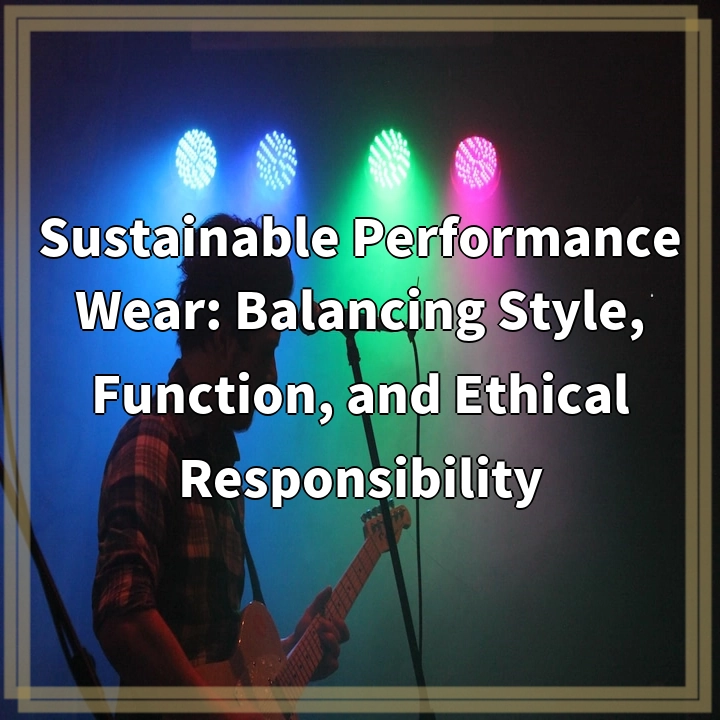
What is Sustainable Performance Wear?
Sustainable performance wear refers to clothing and apparel designed for athletic or physically demanding activities while incorporating sustainable and eco-friendly materials, production techniques, and ethical considerations. This type of clothing aims to minimize its environmental impact, address social issues in the supply chain, and meet the needs of individuals engaged in sports or other active pursuits.
Real-World Problems Associated with Sustainable Performance Wear
Despite the growing popularity of sustainable performance wear, there are still several challenges and issues that need to be addressed.
1. Material Sourcing and Production
One problem faced by manufacturers of sustainable performance wear is finding suitable materials that are both environmentally friendly and meet the functional requirements of sportswear. Natural fibers like organic cotton, hemp, and bamboo are viable options, but they may not offer the same performance properties as synthetic materials. Developing or sourcing sustainable alternatives to synthetic fabrics, such as recycled polyester or innovative materials made from plant-based fibers, is an ongoing challenge.
2. Performance and Durability
A common concern with sustainable performance wear is whether it can match the functionality and durability of traditional sportswear. Athletes and individuals relying on high-performance apparel need garments that can withstand intense physical activity, maintain breathability, provide support, and resist wear and tear. Balancing sustainability with performance features and ensuring long-lasting durability is a key challenge in the development and production of sustainable performance wear.
3. Affordability and Accessibility
Price is often a barrier to the widespread adoption of sustainable performance wear. Sustainable materials and ethical production practices can drive up manufacturing costs, making these products more expensive compared to conventional sportswear options. Addressing this affordability issue while maintaining sustainable practices is crucial to make sustainable performance wear accessible to a wider audience.
4. Consumer Awareness and Education
Many consumers are still unaware of the environmental and social impacts associated with conventional sportswear production. Educating consumers about the benefits of sustainable performance wear and the detrimental effects of traditional alternatives is essential. Building awareness will encourage individuals to make more informed choices and drive the demand for sustainable options.

Solutions for Sustainable Performance Wear
1. Innovating Sustainable Materials
Researchers and manufacturers are continuously exploring and developing sustainable alternatives to traditional synthetic fabrics. This includes materials made from recycled plastics, plant-based fibers, and innovative technologies that can mimic the performance properties of synthetic materials. Investments in research and development are key to expanding the range of sustainable materials available for use in performance wear.
2. Collaboration and Supply Chain Transparency
Brands and manufacturers can work together to establish transparent and ethical supply chains. This involves sourcing materials responsibly, ensuring fair labor practices, and minimizing the carbon footprint throughout the production process. Collaboration within the industry can drive systemic change and encourage healthier and more sustainable practices.
3. Designing for Circular Economy
Designing performance wear with the principles of the circular economy in mind can help reduce waste and extend the lifecycle of products. This includes using recyclable or biodegradable materials, designing for durability and repairability, and implementing take-back programs for end-of-life products. Embracing circular strategies ensures that garments have a smaller environmental impact and reduce reliance on resource extraction.
4. Consumer Education and Demand
Raising awareness among consumers about the benefits of sustainable performance wear is paramount. Brands and organizations can actively educate consumers about the environmental and social impacts of traditional sportswear and highlight the advantages of choosing sustainable alternatives. This can be done through marketing campaigns, collaborations with influencers, and providing accessible information on sustainable practices.
5. Affordability and Accessibility
Addressing the affordability challenge requires making sustainable performance wear more accessible to a wider audience. This can be achieved by scaling up production, leveraging economies of scale, and exploring cost-effective sustainable materials and production methods. Collaboration between brands and retailers can help drive down prices and make sustainable options more affordable and readily available for consumers.















